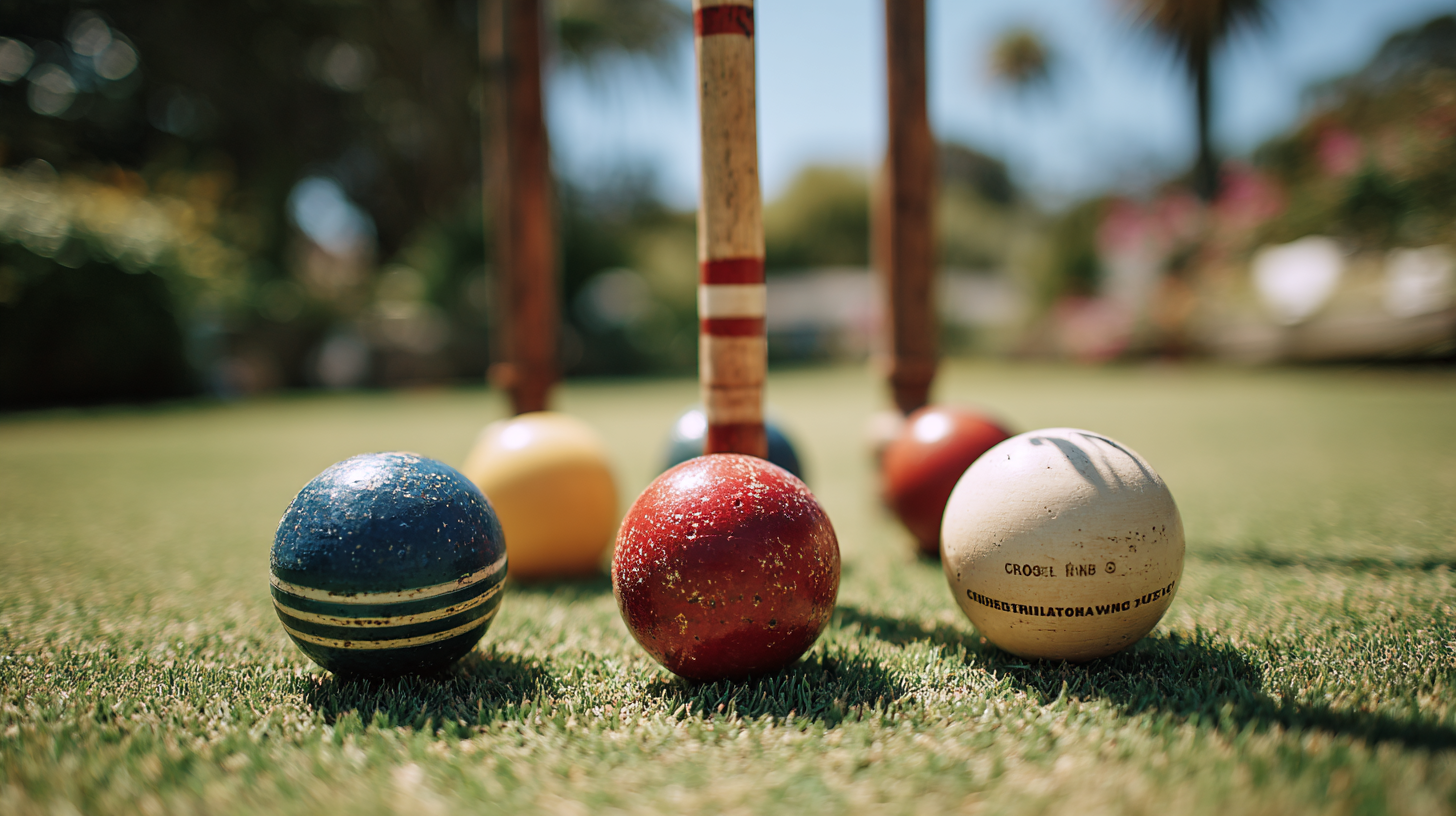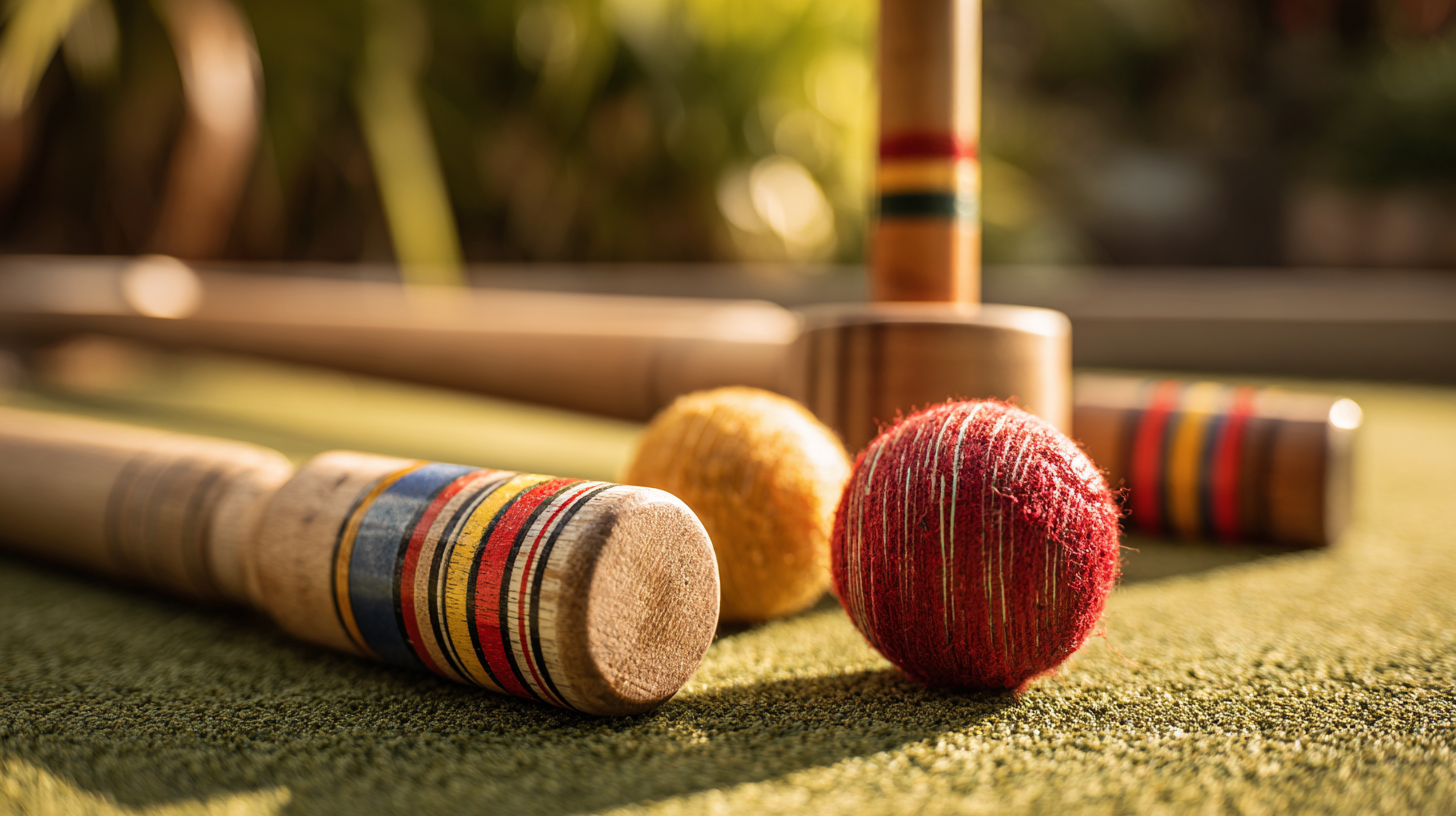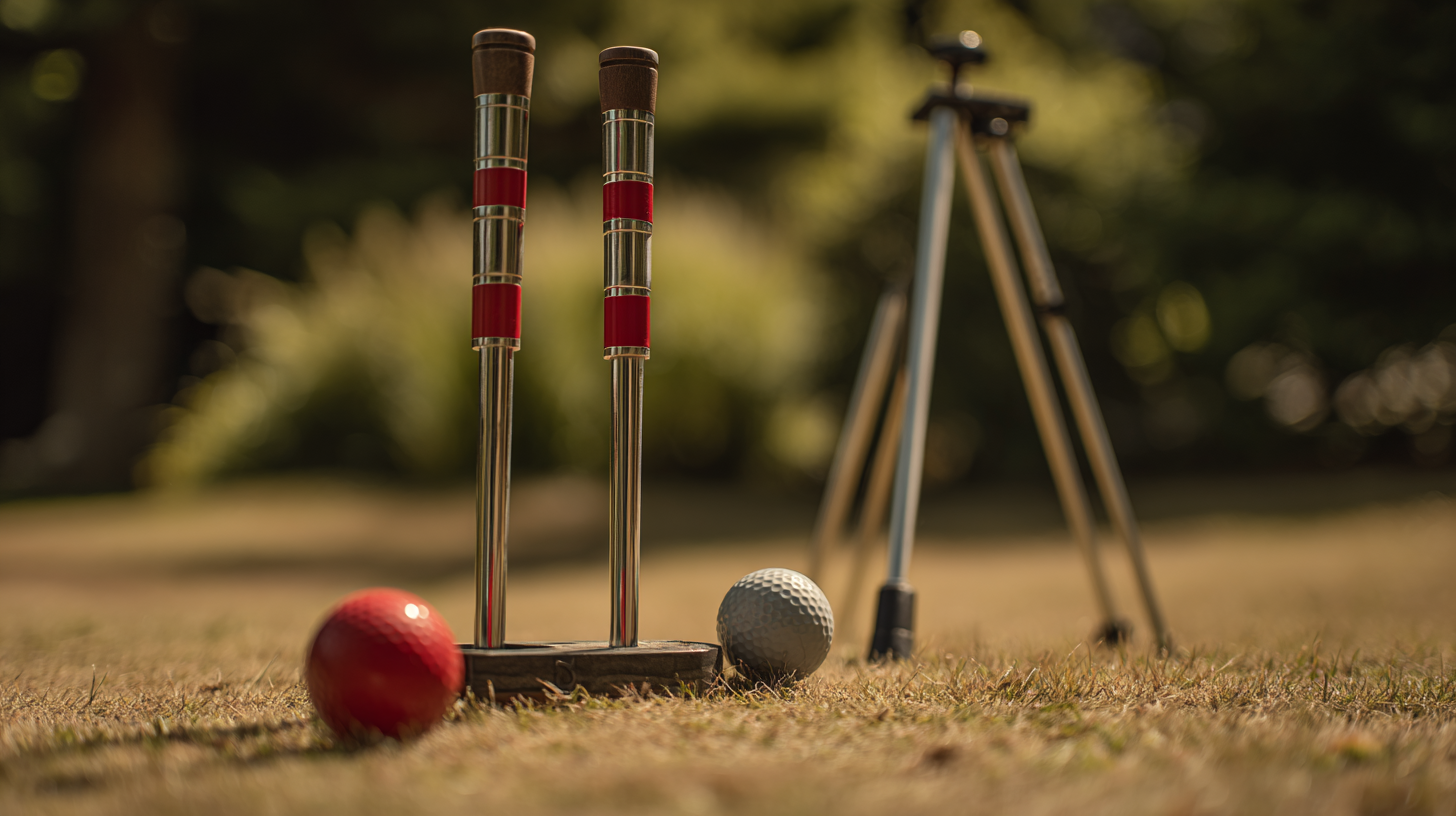In the realm of backyard sports, few games combine elegance, strategy, and camaraderie quite like croquet. As the popularity of this timeless pastime continues to grow, so does the demand for high-quality equipment that enhances the playing experience.

This blog delves into the technical specifications of the best Croquet Set Up available in the market, aimed at optimizing performance for players of all skill levels. By examining key components such as mallet design, ball composition, and court dimensions, we will provide insightful analysis and recommendations for enthusiasts eager to elevate their game.
Furthermore, with an eye on the industry’s projected trends leading up to 2025, we will explore how advancements in croquet equipment reflect broader market shifts, ensuring that even the most discerning players can find their perfect match. Join us as we unravel the intricacies of a superior Croquet Set Up that promises to transform casual play into a competitive experience.
When it comes to selecting a high-performance croquet set, understanding the key components is crucial for optimal gameplay. The quality of the mallet, in particular, can significantly affect your performance. Look for mallets crafted from durable hardwood, which provides both stability and a balanced feel. A heavier mallet offers more power for striking the ball, while lighter mallets improve control and finesse during play.
Another essential aspect to consider is the design of the balls. Professional croquet balls are typically made from resilient materials that withstand the rigors of outdoor play. Choose balls with a consistent weight and size for better compatibility with your mallet's striking surface, ensuring a uniform playing experience. Additionally, check for vibrant colors and markings that enhance visibility on the lawn, allowing players to track the ball's movement more effectively.
**Tips:** Always test out different mallet weights and styles before purchasing to find the one that feels best for your playing style. Regular maintenance, including cleaning and storing your mallet properly, will extend its life and maintain performance. Lastly, consider investing in a quality carrying bag for your set; it not only protects your equipment but also makes transporting your set to various playing locations more convenient.

When it comes to premium croquet equipment, the materials used can significantly impact gameplay and overall performance. One of the most crucial components of a high-quality croquet set is the balls. Premium croquet balls are typically made from solid hardwood or high-density plastic, which not only ensures durability but also provides a perfect weight for precise striking. The surface finish is equally important; a polished finish enhances the ball's aerodynamics and allows for smoother rolls across various lawn surfaces.
Another vital element is the mallet. Mallets crafted from top-grade hardwood, such as maple or hickory, offer superior strength and flexibility. Additionally, the choice of a rubber or synthetic face on the mallet can affect the level of control players have over their shots. Many premium sets also incorporate ergonomic designs that improve grip and swing mechanics, allowing players to play longer without fatigue. Quality croquet sets often include well-made hoop stakes and connectors, typically made from corrosion-resistant materials, ensuring that the equipment withstands the elements while maintaining optimal performance throughout many seasons.
When it comes to optimizing mallet design for maximum control and precision in croquet, several key technical specifications come into play. According to the Croquet Association's 2022 report, mallet head weight significantly influences striking accuracy and power. A mallet head weighing between 16 to 18 ounces provides a perfect balance that caters to both experienced players seeking greater control and beginners who require easier maneuverability. Additionally, the ideal length for a mallet ranges from 38 to 42 inches, depending on the player's height and style. This ensures that players can execute precise shots without straining their posture and maintaining consistency in their swing.

Furthermore, the choice of materials used in mallet construction also affects performance. A 2023 analysis by the International Croquet Federation emphasizes the advantages of using laminated wood for mallet heads. This material offers a higher resistance to warping and provides a consistent striking surface. Additionally, ergonomic grip designs, such as those modeled after high-performance golf clubs, significantly enhance player comfort and control. The integration of these specifications can lead to a noticeable difference in gameplay experience, enabling players to refine their skills and achieve optimal performance on the croquet lawn.
Choosing the right balls is crucial for enhancing gameplay in croquet, as the specific design and materials can significantly impact performance. High-quality croquet balls typically come in different weights and sizes, which can affect their roll and responsiveness on the lawn. When selecting balls, it’s important to consider the playing surface; for example, lighter balls might perform better on softer, grass surfaces, while heavier balls can provide better momentum on harder lawns. Players should experiment with different weights to find the perfect balance that suits their playing style.
Additionally, the material of the balls plays a vital role in their performance. Traditional wooden balls offer a classic feel and excellent durability, while modern composite options often provide better resilience and distance. Rubber or synthetic balls may offer unique advantages in terms of bounce and grip. It's beneficial to test a few different types to understand how they behave during play, allowing players to make an informed decision about which options will enhance their overall experience and facilitate improved gameplay. Investing in the right croquet balls can elevate a player's skill level and enjoyment of this timeless outdoor sport.
| Ball Type | Diameter (inches) | Weight (grams) | Material | Bounce Height (cm) |
|---|---|---|---|---|
| Traditional Wooden Ball | 3.5 | 300 | Wood | 45 |
| Professional Synthetic Ball | 3.5 | 320 | Plastic | 50 |
| Heavy-Duty Composite Ball | 3.5 | 340 | Composite | 48 |
| Eco-Friendly Ball | 3.5 | 310 | Recycled Material | 47 |
When it comes to enhancing your croquet experience, the field setup plays a crucial role. A well-laid-out playing area can significantly influence gameplay, strategy, and enjoyment. For optimal performance, consider the size and condition of your lawn. Aim for a flat, well-maintained surface, free of obstructions such as stones or holes. This ensures a consistent ball roll and minimizes unexpected disruptions.
**Tips:** Clear any debris from the field before setting up your croquet equipment, and mark out your boundaries to maintain a clear understanding of the playing area. Additionally, consider the orientation of your setup in relation to the sun. Positioning the court to avoid glare or harsh shadows can help players focus better and improve their shots.
Another essential aspect is the arrangement of the wickets. Properly spacing the wickets according to standard regulations can lead to fairer play and enhance the competition's integrity. Position the hoops in a way that allows for varied gameplay, combining both straight shots and challenging angles.
**Tips:** A good rule of thumb is to place the wickets at least 10 feet apart, ensuring that players have enough room to maneuver without making the game too easy. Regularly check the alignment and stability of your wickets, adjusting them as needed to maintain a professional-grade playing field.
